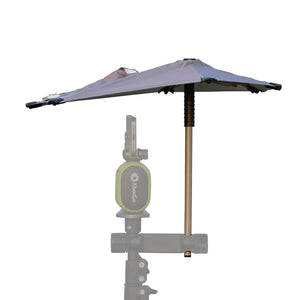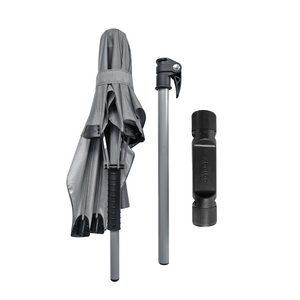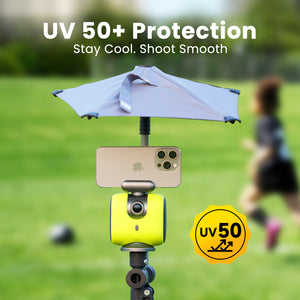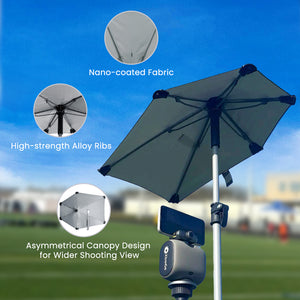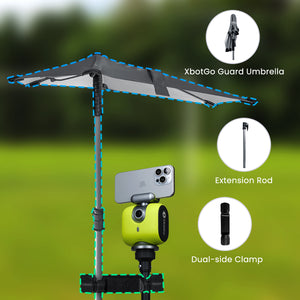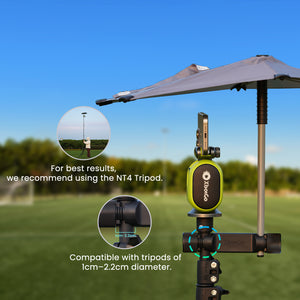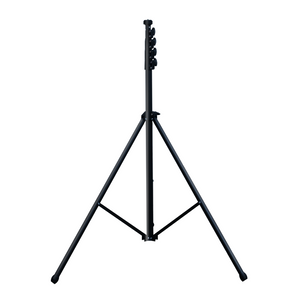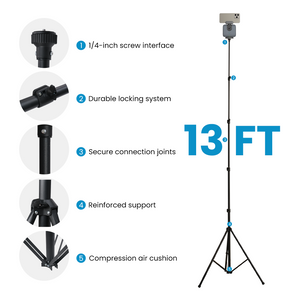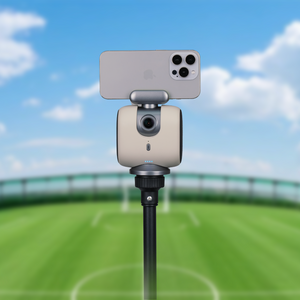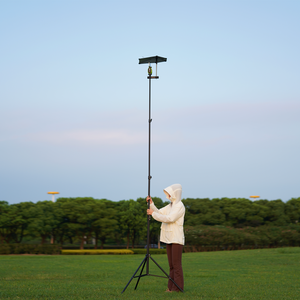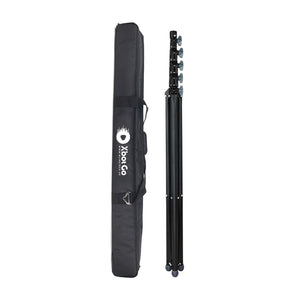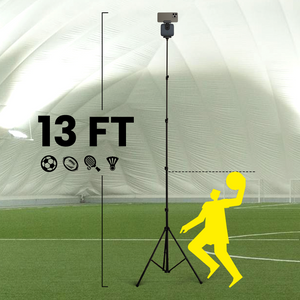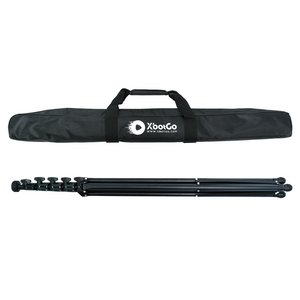XbotGo Chameleon AI Sports Camera
Basketball Positions: Roles, Responsibilities & Trends
Ever watched a basketball game and wondered why certain players always seem to be bringing the ball up court while others camp out near the basket? Or maybe you're new to playing and trying to figure out where you fit on the team? Understanding basketball positions is like learning the instruments in an orchestra—each has a unique role, but they all work together to create something special.
In today's game, the lines between positions are blurring more than ever. We're seeing 7-foot point guards and centers who can drain three-pointers. But here's the thing: even with all this evolution, the fundamental framework of basketball positions still matters. It's the foundation that helps us understand how teams operate, how players develop their skills, and how the beautiful game of basketball flows.
So whether you're picking up a basketball for the first time or you're a seasoned player looking to expand your game, let's break down everything you need to know about basketball positions—from the traditional roles to the modern twists that are reshaping the sport.
The Five Traditional Basketball Positions
Point Guard (1): The Floor General
Picture the point guard as the conductor of the basketball orchestra. They're the ones you'll see bringing the ball up court, surveying the floor like a chess master planning their next move. Traditionally the smallest player on the team—usually between 6'0" and 6'4" in the NBA—point guards make up for their lack of size with exceptional skill and basketball IQ.
Core Responsibilities:
The point guard's job starts the moment their team gains possession. They're responsible for:
- Advancing the ball up court against defensive pressure
- Reading the defense and calling the right plays
- Creating scoring opportunities for teammates through precise passing
- Setting the tempo—knowing when to push the pace or slow things down
- Defending the opposing team's primary ball-handler
Think of Chris Paul, the master facilitator who seems to have eyes in the back of his head. He exemplifies the traditional point guard—always looking to set up teammates, controlling the game's rhythm, and making everyone around him better.
Essential Skills:
If you want to excel at point guard, here's what you need in your toolkit:
- Elite ball-handling: You should be able to dribble with either hand without looking at the ball
- Court vision: The ability to see plays develop before they happen
- Decision-making: Split-second choices under pressure can make or break possessions
- Leadership: You're the coach on the floor—communication is crucial
- Outside shooting: Modern defenses will sag off if you can't shoot, clogging driving lanes for your teammates
Modern Evolution:
Here's where things get interesting. Today's point guards aren't just facilitators—they're often the team's primary scoring threat. Steph Curry revolutionized the position by combining otherworldly shooting with traditional point guard skills. These "score-first" point guards create a fascinating paradox: they're supposed to make their teammates better, but they're also the best scoring option. The key? Knowing when to do which.
Shooting Guard (2): The Primary Scorer
If the point guard is the conductor, the shooting guard is the lead guitarist—they're there to put on a show and light up the scoreboard. Usually standing between 6'3" and 6'7", shooting guards combine size with perimeter skills to create consistent offense.
Core Responsibilities:
The shooting guard's main job? Buckets. But it's more nuanced than just chucking up shots:
- Moving without the ball to find open shooting opportunities
- Creating their own shot off the dribble when plays break down
- Providing secondary ball-handling to relieve pressure on the point guard
- Defending opposing wing players and fighting through screens
- Cutting to the basket when defenders overplay the perimeter
Essential Skills:
- Shooting accuracy: This one's obvious—you need to knock down shots consistently
- Off-ball movement: Watch Klay Thompson run through screens—it's an art form
- Conditioning: You'll be in constant motion, running your defender ragged
- Defensive footwork: You'll guard the opposing team's best perimeter scorer
- Shot creation: When the shot clock winds down, can you get a decent look?
Player Archetypes:
Shooting guards come in various flavors:
- Pure Shooters: Think JJ Redick or Klay Thompson—catch and shoot specialists
- Slashers: Explosive athletes like prime Dwyane Wade who attack the rim
- 3-and-D Wings: Role players who space the floor and lock down defensively
- Combo Guards: Versatile players who can run the offense when needed
The late Kobe Bryant embodied the complete shooting guard—deadly from anywhere on the floor, lockdown defender when engaged, and possessing the mindset to take (and make) the biggest shots.
Small Forward (3): The Swiss Army Knife
Here's my favorite position to watch—the small forward. Why? Because they do everything. Standing typically between 6'6" and 6'9", small forwards are the ultimate basketball multitool. They need the skills of a guard with the size to bang inside.
Core Responsibilities:
Small forwards are asked to:
- Score from all three levels: at the rim, mid-range, and beyond the arc
- Grab rebounds in traffic despite giving up size to power forwards and centers
- Defend multiple positions—you might guard a point guard one possession and a power forward the next
- Facilitate offense when the primary ball-handlers are pressured
- Provide energy through hustle plays and transition opportunities
Essential Skills:
- Versatility: This is the name of the game—be good at everything
- Athleticism: You need speed to keep up with guards and strength to battle forwards
- Basketball IQ: Understanding when to cut, when to post up, when to space the floor
- Defensive flexibility: Switching effectively is crucial in modern basketball
- Rebounding instincts: You won't always be the biggest, but you can be the smartest
The "Point Forward" Evolution:
LeBron James changed everything. He showed that a 6'9", 250-pound forward could run an offense like Magic Johnson while still defending, rebounding, and scoring at an elite level. These "point forwards" create nightmares for defenses—imagine trying to stop someone who can post up your point guard or blow by your power forward.
Power Forward (4): The Evolved Big Man
If there's one position that's changed dramatically over the past two decades, it's power forward. The days of Charles Oakley and Buck Williams—bruising big men who lived in the paint—are largely gone. Today's power forwards need to stretch the floor while maintaining some traditional big man skills.
Core Responsibilities:
Modern power forwards balance several roles:
- Rebounding, especially on the offensive glass for second-chance points
- Setting screens in pick-and-roll actions
- Defending both interior players and switching onto perimeter threats
- Spacing the floor with reliable shooting
- Operating from the high post as a passing hub
Essential Skills:
- Shooting range: The ability to knock down threes changes everything
- Physical strength: You'll still battle in the post on both ends
- Screen-setting: Good screens create good shots—it's that simple
- Defensive versatility: Can you guard a center in the post AND a guard on the perimeter?
- Passing vision: Modern offenses often run through skilled forwards
The "Stretch Four" Phenomenon:
Dirk Nowitzki pioneered it, and now everyone wants one—a power forward who can shoot threes at a high clip. Why? Simple math. When your big man can shoot from 25 feet, the opposing center has to leave the paint to guard them. Suddenly, driving lanes open up like the Red Sea parting. It's changed how teams construct their rosters and design their offenses.
Center (5): The Anchor
The center has always been the anchor—defensively protecting the rim, offensively operating near the basket. Traditional centers like Shaquille O'Neal imposed their will through sheer physical dominance. But like everything in basketball, the position is evolving.
Core Responsibilities:
Centers are asked to:
- Protect the rim through shot-blocking and defensive positioning
- Dominate the glass on both ends
- Score efficiently in the paint
- Set solid screens to free up perimeter players
- Anchor the defense with communication and help rotations
Essential Skills:
- Size and strength: You're the last line of defense
- Timing: For blocks, rebounds, and rolls to the basket
- Hands: Can you catch tough passes in traffic?
- Footwork: Post moves require ballet-like precision
- Conditioning: Modern centers run more than ever
Modern Center Evolution:
Then there's Nikola Jokić—a 7-footer who runs the offense like a point guard, shoots threes, and makes passes that leave you scratching your head. Joel Embiid combines traditional post dominance with a reliable three-point shot. These modern centers have made the position more skilled than ever, though the fundamental job—protect the paint, grab rebounds—remains unchanged.
The Numerical System and Communication
Quick sidebar: you'll often hear positions referred to by numbers:
- 1 = Point Guard
- 2 = Shooting Guard
- 3 = Small Forward
- 4 = Power Forward
- 5 = Center
This isn't just basketball slang—it's functional. Coaches use these numbers to call plays quickly. "14 pick and roll" immediately tells players that the point guard and power forward are running a screen action. It's efficient communication that transcends language barriers.
Conclusion
So learn the positions, understand their traditional roles, but don't be afraid to color outside the lines. After all, basketball is jazz, not classical music. The best players know the standards but aren't afraid to improvise.
Now get out there and find your spot on the court—wherever that may be.
XbotGo Chameleon AI Sports Camera
Capture every moment with AI-powered tracking. Perfect for coaches, parents, and athletes who want seamless footage without manual filming.







 Soccer
Soccer Basketball
Basketball Ice Hockey
Ice Hockey Rugby
Rugby










